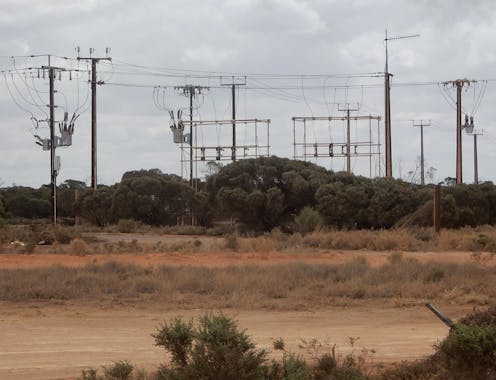Why is the Australian energy regulator suing wind farms – and why now?
- Written by Samantha Hepburn, Director of the Centre for Energy and Natural Resources Law, Deakin Law School, Deakin University

The Australian Energy Regulator (AER) is suing four of the wind farms involved in the 2016 South Australian blackout - run by AGL Energy, Neoen Australia, Pacific Hydro, and Tilt Renewables – alleging they breached generator performance standards and the national electricity rules.
These proceedings appear to contradict the conclusions of a 2018 report which said while the AER had found some “administrative non-compliance”, it did not intend to take formal action given the “unprecedented circumstances”.
Read more: What caused South Australia's state-wide blackout?
However the AER has since said this report focused on the lead-up and aftermath of the blackout, not the event itself. The case hinges on whether the wind farms failed to provide crucial information during the blackout which hindered recovery.
In particular, the AER is arguing the software protecting the wind farms should have been able to cope with voltage disturbances and provide continuous energy supply. On the face of it, however, this will be extremely difficult to prove.
Rehashing the 2016 blackout
The 2016 South Australian blackout was triggered by a severe storm that hit the state on September 28. Tornadoes with wind speeds up to 260 km/h raced through SA, and a single-circuit 275-kilovolt transmission line was struck down.
Read more: Baffled by baseload? Dumbfounded by dispatchables? Here's a glossary of the energy debate
After this, 170km away, a double-circuit 275kV transmission line was lost. This transmission damage caused the lines to trip and a series of subsequent faults resulted in six voltage dips on the South Australian grid at 4.16pm.
As the faults escalated, eight wind farms in SA had their protection settings activated. This allowed them to withstand the voltage dip by automatically reducing power. Over a period of 7 seconds, 456 megawatts of power was removed. This reduction caused an increase in power to flow through the Heywood interconnector. This in turn triggered a protection mechanism for the interconnecter that tripped it offline.
Once this happened, SA became separated from the rest of the National Energy Market (NEM), leaving far too little power to meet demand and blacking out 850,000 homes and businesses. A 2017 report found once SA was separated from the NEM, the blackout was “inevitable”.
Read more: South Australian blackout: renewables aren't a threat to energy security, they're the future
What went wrong at the wind farms?
The question then becomes, is there any action the wind farms could reasonably have taken to stay online, thus preventing the overloading of the Heywood interconnector?
The regulator is arguing the operators should have let the market operator know they could not handle the disruption caused by the storms, so the operator could make the best decisions to keep the grid functioning.
Wind farms, like all energy generators in Australia, have a legal requirement to meet specific performance standards. If they fall short in a way that can materially harm energy security, they have a further duty to inform the operator immediately, with a plan to remedy the problem.
To determine whether a generator has complied with these risk management standards, a range of factors are considered. These include:
- the technology of the plant,
- whether its performance is likely to drift or degrade over a particular time frame,
- experience with the particular generation technology,
- the connection point arrangement that is in place. A generator will have an arrangement with a transmission network service provider (TNSP) that operates the networks that carry electricity between generators and distribution networks. TNSP’s advise the NEM of the capacity of their transmission assets so that they can be operated without being overloaded.
- the risk and costs of different testing methods given the relative size of the plant.
Plenty of blame to go around
The series of events leading up to the 2016 blackout was extremely difficult to anticipate. There were many factors, and arguably all participants were involved in different ways.
The Heywood interconnector was running at full capacity at the time, so any overload may have triggered its protective mechanism.
The transmission lines were damaged by an unprecedented 263 lightning strikes in five minutes.
The market operator itself did not adopt precautionary measures such as reducing the load on the interconnector, or providing a clearer warning to electricity generators.
Bearing this in mind, the federal court will be asked to determine whether the wind farms complied with their generator performance standards and if not, whether this breach had a “material adverse effect” on power security.
This will be difficult to prove, because even if the generator standards require the wind farms to evaluate the point at which their protective triggers activated, it is unlikely the number of faults, the severity of the voltage dip, and the impact of the increased power flow on the Heywood interconnector could have been anticipated.
The idea AEMO could have prevented the blackout if the wind farms had alerted it to the disruptive potential of their protective triggers is probably a little remote.
None of the participants could have foreseen the series of interconnected events leading to the blackout. Whilst lessons can be learned, laying blame is more complex. And while compliance with standards and rules is important, in this instance, it is unlikely that it would have changed the outcome.
Authors: Samantha Hepburn, Director of the Centre for Energy and Natural Resources Law, Deakin Law School, Deakin University



















